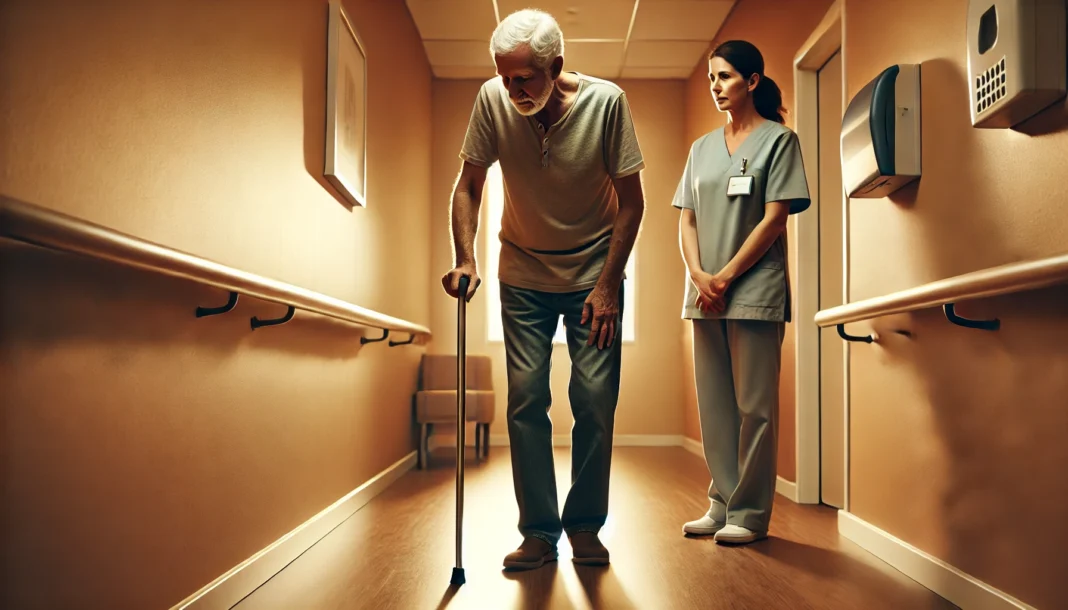Introduction
Dementia is often understood primarily as a cognitive disorder—one that slowly robs individuals of their memory, judgment, language, and ability to manage everyday life. However, what’s less commonly acknowledged is the physical dimension of this neurological disease, especially the strong connection between dementia and balance. As researchers deepen their understanding of neurodegenerative conditions, the link between cognitive impairment and motor instability has become a vital topic. One of the most concerning realities for both caregivers and individuals affected is that balance issues aren’t just a side effect—they can serve as early warning signs and significantly increase the risk of serious injuries from falls.
You may also like: How to Stop Cognitive Decline: Science-Backed Steps for Prevention and Brain Longevity
This intersection between dementia and balance problems is far more than a coincidence. Brain regions involved in motor coordination often suffer degeneration alongside those responsible for cognition. As dementia progresses, these impairments tend to worsen, leading to decreased physical independence, elevated fall risk, and diminished quality of life. For aging individuals, this connection means that what might appear as a minor balance issue could in fact be a signal of deeper neurological decline. Understanding this relationship is crucial not just for clinicians, but for families seeking to support their loved ones with dignity, safety, and early intervention.
In this article, we explore the intricate relationship between dementia and motor control, unpack the science behind gait and balance changes, highlight red flags that could point to neurodegeneration, and offer insights into strategies that can improve outcomes. From clinical research to caregiving best practices, this piece offers a comprehensive, evidence-based look at one of the most important—and often under-discussed—aspects of dementia.
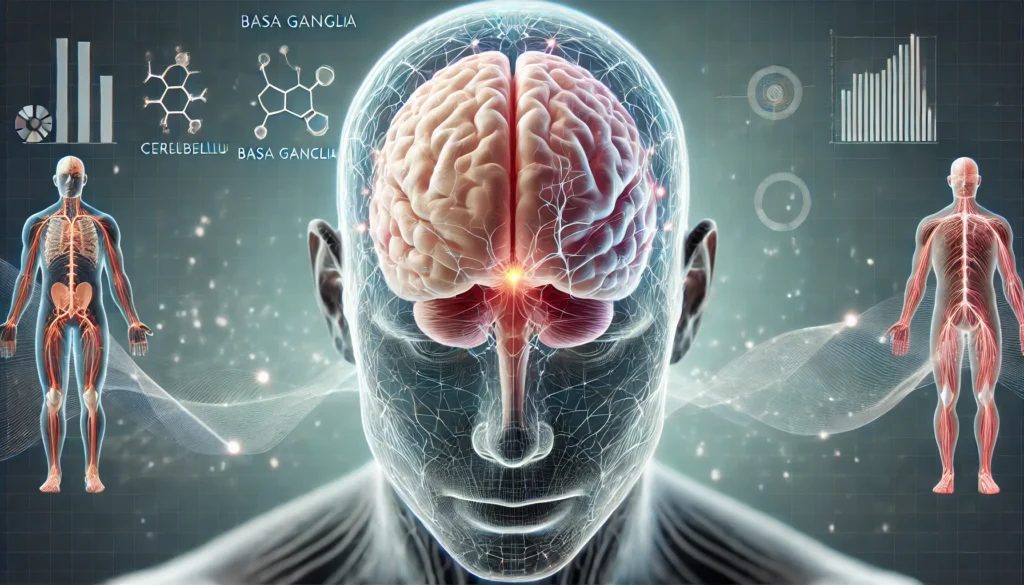
The Neurological Overlap Between Cognition and Balance
The human brain does not compartmentalize function as neatly as once thought. While certain regions specialize in specific processes, they are interconnected through vast neural networks. In the case of dementia and balance, this interconnection becomes evident in how degenerative processes affect not only memory but also the body’s physical coordination.
The cerebellum and basal ganglia are two brain regions intimately involved in balance, coordination, and posture. In many types of dementia, including Alzheimer’s, Lewy body dementia, and Parkinson’s disease dementia, these regions undergo changes that impair their function. Additionally, the frontal lobe—which plays a major role in executive function and movement initiation—also deteriorates over time. As a result, individuals may experience both cognitive decline and motor instability simultaneously.
This overlap creates a feedback loop: impaired cognition may reduce the brain’s ability to process sensory input necessary for balance, while declining physical stability may restrict movement, leading to faster cognitive and physical deterioration due to inactivity. Understanding this duality is essential for anyone looking to detect the early stages of dementia and balance problems, especially since subtle gait abnormalities often emerge before significant memory loss is noticed.
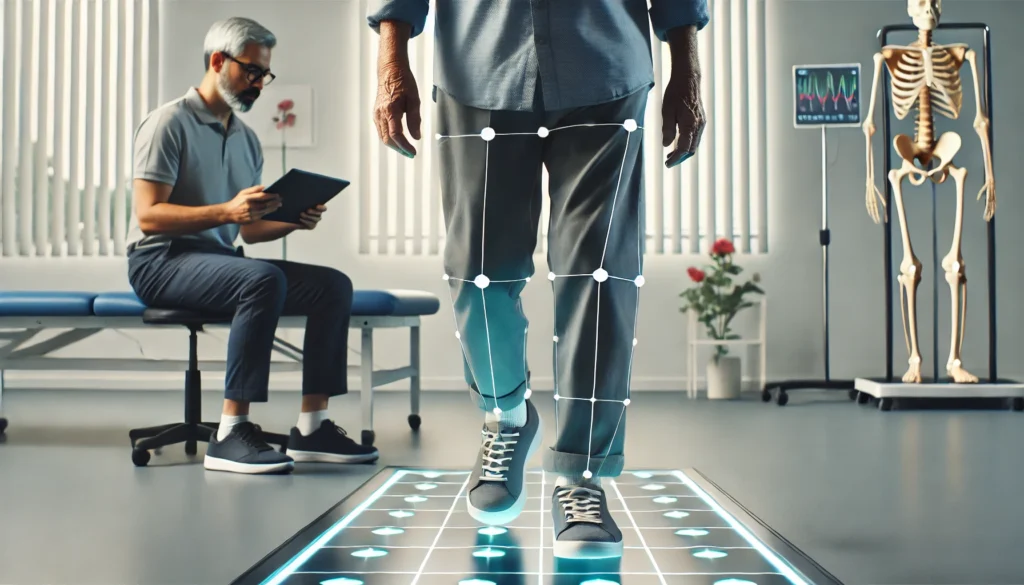
Gait Changes as an Early Sign of Dementia
Gait is a remarkably sensitive indicator of overall brain health. Changes in walking speed, stride length, arm swing, and foot clearance can provide early clues about underlying cognitive impairment. Studies have shown that certain gait disturbances precede dementia diagnoses by years, making gait analysis a promising area for early detection.
One well-researched phenomenon is the “dual-task gait test,” where an individual is asked to walk while performing a cognitive task, such as counting backwards. Those with early-stage dementia often slow down or exhibit greater imbalance during such exercises, indicating a cognitive load that the brain can no longer manage efficiently. These findings underscore the direct relationship between dementia and balance and suggest that routine gait analysis could be incorporated into standard screenings for older adults.
People with dementia and balance problems may not initially recognize their instability. It might manifest as a loss of confidence in walking, reluctance to navigate stairs, or an increased need for handrails and support. Family members are often the first to notice these changes. The earlier these signs are addressed, the better the chances of mitigating risks through therapeutic or environmental interventions.
The Increased Risk of Falls in People with Dementia
Falls are a leading cause of injury-related death among older adults, and this risk increases significantly in individuals with cognitive decline. The connection between dementia and balance problems leads to a perfect storm of vulnerability: reduced attention span, delayed reaction time, impaired depth perception, and compromised motor coordination.
As dementia advances, individuals may also experience visuospatial distortions—difficulty judging distances or navigating around objects. This can result in bumping into furniture, tripping over small thresholds, or misjudging steps. Additionally, the fear of falling can ironically contribute to falls, as anxiety often leads to stiffer movements and overcorrection, increasing instability.
This isn’t just a theoretical concern. Statistics show that people with dementia are two to three times more likely to fall than cognitively healthy adults. Moreover, they are less likely to recover fully from a fall due to frailty and often delayed recognition of the injury, especially if communication is impaired. This reality has led many geriatricians and neurologists to emphasize the urgent need to assess dementia and balance as an integrated clinical issue rather than treating them separately.
Common Types of Dementia and Their Impact on Balance
Not all forms of dementia affect balance in the same way. Alzheimer’s disease, the most prevalent form, typically impacts memory and cognition first, with balance issues becoming more prominent in later stages. However, in conditions like Lewy body dementia and Parkinson’s disease dementia, motor symptoms often appear much earlier.
Lewy body dementia is particularly associated with fluctuations in attention, visual hallucinations, and parkinsonian motor symptoms, including tremors, shuffling gait, and rigidity. These changes significantly increase the risk of falls and make dementia and balance problems a defining clinical concern from the outset. Similarly, in Parkinson’s-related dementias, postural instability and freezing of gait can precede significant memory issues.
Vascular dementia, caused by impaired blood flow to the brain, often leads to both physical and cognitive impairments simultaneously. Small vessel damage in the brain’s white matter disrupts communication between areas responsible for balance and those governing cognitive function. This dual impairment further underscores how intertwined brain systems are when it comes to motor control and memory.
Understanding the nuances among different types of dementia is vital for healthcare professionals to tailor assessments and interventions. It also helps families set realistic expectations and adopt a proactive rather than reactive approach to managing dementia and balance challenges.
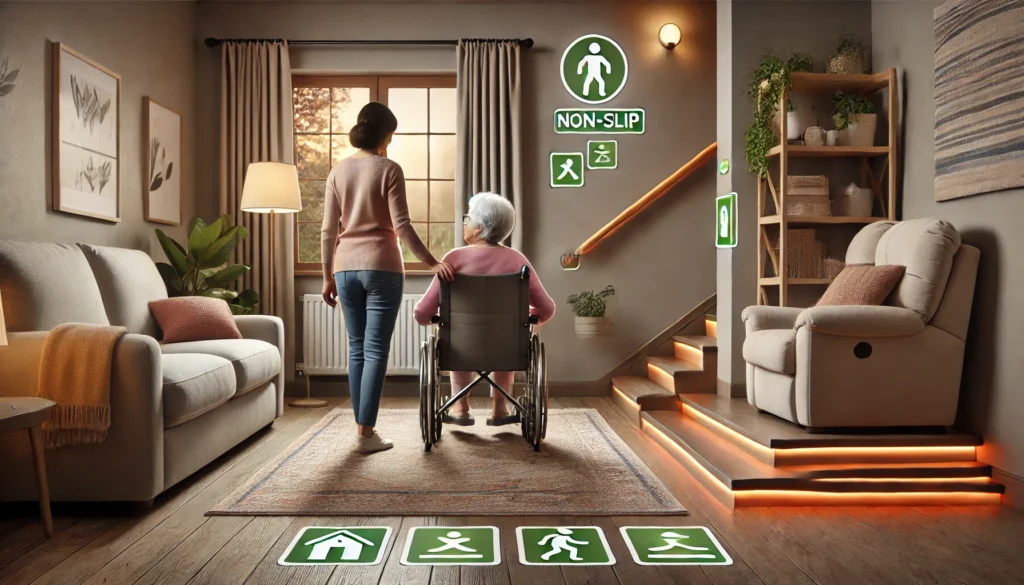
Environmental Triggers and Home Safety for Dementia Patients with Balance Issues
Creating a safe and supportive environment is one of the most effective ways to reduce the risks associated with dementia and balance problems. As balance becomes more precarious and cognition deteriorates, even familiar settings can become hazardous. Rugs, cords, uneven flooring, and poor lighting are common culprits in household falls. But the issue extends beyond physical layout—cognitive changes mean that the person may forget how to use mobility aids, misinterpret stairs as flat surfaces, or forget that their balance is impaired altogether.
This makes home modification a vital part of care planning. Non-slip mats, grab bars, adequate lighting, and decluttered walkways can go a long way. But so can visual cues—colored tape on stair edges, labels on drawers, or contrasting paint to highlight doorways. These modifications help compensate for both cognitive and motor deficits, reinforcing a sense of safety and spatial understanding.
It’s also important to reassess safety regularly. As dementia and balance issues evolve, what was once manageable may become dangerous. A routine check of the environment—alongside updated mobility assessments—ensures that the living space evolves with the person’s needs.
How Medications Can Influence Balance in Dementia
Pharmacological management of dementia symptoms often includes antipsychotics, antidepressants, sleep aids, and cholinesterase inhibitors. While these drugs can improve quality of life and help manage symptoms such as agitation or anxiety, they are not without side effects—many of which impact balance.
Sedation, dizziness, orthostatic hypotension, and muscle weakness are among the most common side effects that can contribute to falls. Moreover, individuals with dementia may be less able to communicate these side effects, increasing the risk of unnoticed complications. Inappropriate polypharmacy—the use of multiple medications without a clear benefit—can amplify these dangers significantly.
When discussing dementia and balance problems, medication management must be part of the conversation. Regular medication reviews with a pharmacist or geriatrician can identify drugs that may impair balance and explore safer alternatives. This is especially important for patients who are exhibiting new gait disturbances or have recently experienced a fall. Sometimes, simply reducing the dosage or switching medications can dramatically improve both cognitive clarity and physical stability.
The Role of Physical Therapy and Exercise in Managing Balance
Movement may seem counterintuitive for someone struggling with balance, but in truth, targeted physical activity is one of the most effective ways to improve stability and reduce fall risk in dementia. Balance training, strength exercises, and coordination drills can help retrain the body and brain to function more harmoniously.
Physical therapists trained in geriatric care can design personalized programs that address both dementia and balance needs. These routines may include exercises to enhance proprioception (the body’s sense of its position in space), flexibility training to reduce stiffness, and strength conditioning to improve core stability. Some programs even integrate music or rhythm to support timing and coordination, which can be particularly helpful in certain types of dementia.
Exercise also offers cognitive benefits. Movement increases blood flow to the brain, supports neuroplasticity, and may slow the progression of cognitive decline. For many individuals, a regular exercise routine restores not only function but also confidence—helping them maintain independence and a sense of purpose.
Psychological and Emotional Effects of Balance Loss in Dementia
The physical impact of dementia and balance problems is profound, but the emotional consequences are equally significant. Fear of falling can lead to reduced mobility, social withdrawal, and depression. This fear is often rooted in real experiences—many people with dementia have fallen or know someone who has—and the memory of that trauma may linger, even when other cognitive functions are declining.
This creates a vicious cycle: fear leads to inactivity, which results in muscle deconditioning and even greater instability. Meanwhile, the loss of independence can trigger emotional distress, anxiety, and feelings of hopelessness. These emotional responses, in turn, can exacerbate cognitive decline and contribute to behavioral disturbances like aggression or apathy.
Caregivers play a crucial role in breaking this cycle. Encouraging safe mobility, offering emotional support, and fostering a positive environment can mitigate some of the emotional burdens associated with balance loss. Additionally, therapy and support groups—whether for the person with dementia or their caregivers—can provide coping tools, validation, and practical advice.
Strategies for Caregivers to Support Balance in Dementia Patients
Caring for someone with dementia and balance problems requires a unique blend of vigilance, empathy, and creativity. It’s about finding the right balance—between protection and autonomy, between assistance and encouragement. Here are several strategies that caregivers can adopt to promote safety without compromising dignity.
First, observation is key. Caregivers should watch for signs of instability, such as dragging feet, using walls for support, or avoiding stairs. Even subtle changes can signal a worsening condition. Second, structured routines help build muscle memory and reduce cognitive load. When tasks and movements become habitual, the brain requires less energy to perform them.
Assistive devices like walkers or canes can offer support, but only if they are properly fitted and consistently used. Many individuals with dementia forget to use these tools unless prompted. That’s why creating visual and verbal reminders is so important. Finally, caregivers should maintain open communication with healthcare providers, reporting any changes in mobility or falls. This ensures that treatment plans remain relevant and effective.
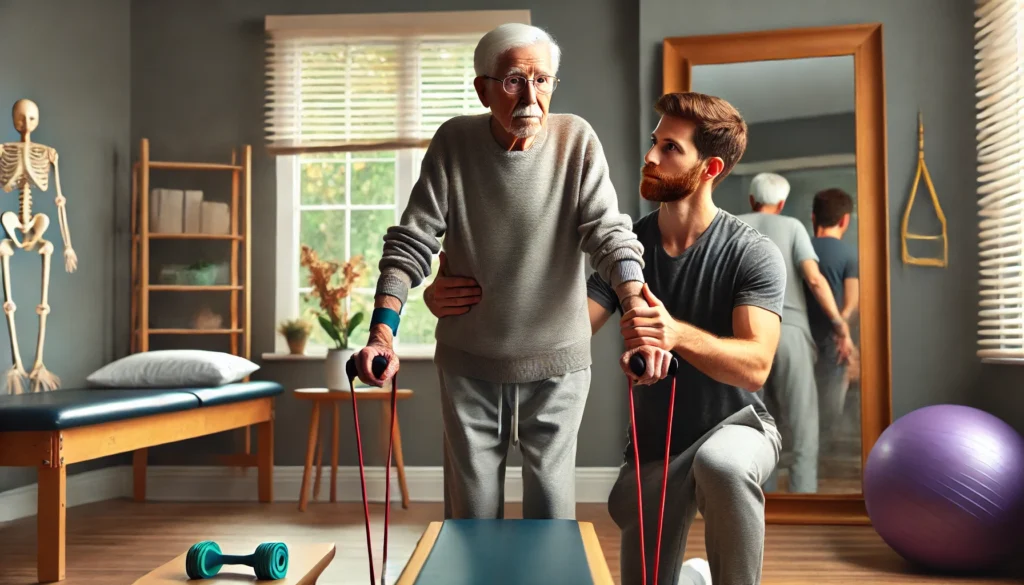
The Future of Research on Dementia and Balance
Emerging technologies are opening new frontiers in understanding and managing dementia and balance. Wearable sensors, for example, can track movement patterns over time, identifying early signs of instability before they result in injury. Virtual reality systems are being used to simulate walking environments, training individuals in fall prevention strategies in a controlled, immersive setting.
On the biological front, researchers are exploring the role of neurotransmitters like dopamine and acetylcholine in both cognition and motor function. Understanding these pathways could lead to medications that simultaneously address both sets of symptoms. Additionally, AI-driven predictive modeling is helping to identify individuals at highest risk of falls based on subtle patterns in behavior and movement.
The more we understand about the relationship between the brain and body, the better we can intervene at the right time, in the right way. The future of dementia care is not just about memory—it’s about mobility, dignity, and the full spectrum of human function.
Frequently Asked Questions
1. What causes the connection between dementia and balance problems?
The link between dementia and balance arises from shared neurological pathways in the brain that control both cognitive and motor functions. Brain regions like the cerebellum, basal ganglia, and frontal lobe degenerate in many forms of dementia, affecting both memory and coordination. As these regions deteriorate, the ability to process sensory input, control posture, and react to environmental stimuli declines, resulting in physical instability.
2. How early do balance problems show up in dementia?
In some cases, balance problems can appear even before noticeable memory loss. Gait changes, slower walking speed, and difficulty with multitasking while walking are among the earliest signs of cognitive decline. Particularly in conditions like Lewy body dementia or Parkinson’s disease dementia, motor symptoms can be among the first noticeable indicators. Regular observation and early assessment can help identify these issues before they result in injury.
3. Can physical therapy really improve balance in dementia patients?
Yes, physical therapy can be highly beneficial for individuals with dementia who experience balance problems. Customized exercises focused on strength, coordination, and stability help recondition the body and retrain neural pathways. While it may not reverse cognitive decline, it can significantly reduce fall risk, improve quality of life, and enhance confidence in daily activities. Therapists can also educate caregivers on safe mobility techniques.
4. How do medications for dementia affect balance?
Many medications prescribed for dementia—such as antipsychotics, sedatives, or antidepressants—can contribute to balance issues. Side effects like dizziness, muscle weakness, and fatigue can increase the likelihood of falls. Regular medication reviews are essential to identify drugs that may be causing or worsening instability. Adjusting the dosage or switching medications can sometimes yield noticeable improvements in both balance and cognition.
5. What types of dementia most severely impact balance?
Lewy body dementia and Parkinson’s disease dementia are known for causing significant motor symptoms early on, including balance issues, tremors, and gait disturbances. Vascular dementia also commonly affects both cognition and motor control due to damage in areas of the brain responsible for movement. Alzheimer’s disease tends to affect balance in later stages, though individual variations exist.
6. What can caregivers do to prevent falls at home?
Caregivers can make the home environment safer by removing tripping hazards, adding handrails, improving lighting, and using assistive devices when necessary. Structured routines and visual cues also help the person with dementia navigate more safely. It’s important to observe for any changes in gait or mobility and report them to a healthcare provider promptly. Consistent monitoring and proactive adjustments are key to preventing falls.
7. Are falls more dangerous for people with dementia?
Yes, people with dementia are at greater risk of serious injury from falls due to frailty, poor reflexes, and slower recovery times. Additionally, they may not communicate pain effectively or may forget that they have fallen, delaying treatment. This makes it vital to address both dementia and balance problems as a combined concern and take preventive measures early.
8. Can balance problems indicate the onset of dementia?
Absolutely. In many cases, subtle balance issues—especially when combined with cognitive symptoms like forgetfulness or disorientation—may point to the early stages of dementia. This is particularly true when gait changes occur without any obvious musculoskeletal injury. If a loved one begins walking more cautiously or shows signs of instability, it’s wise to seek a neurological evaluation.
9. Is it safe for someone with dementia and balance issues to live alone?
It depends on the severity of the symptoms. Early in the progression of dementia, with appropriate home modifications and monitoring technology, some individuals may be able to live independently. However, as both cognitive and motor symptoms worsen, the risk of falls and injury increases significantly. A thorough safety assessment by a professional is essential in making this decision.
10. What new research is being done on dementia and balance?
Cutting-edge research is exploring how wearable devices, brain imaging, and AI can help predict and prevent falls in people with dementia. Studies are also looking at neurotransmitter pathways that control both cognition and movement, potentially opening the door to dual-function medications. As the science evolves, so too does the potential for earlier detection and more personalized treatment plans that address both brain and body health.
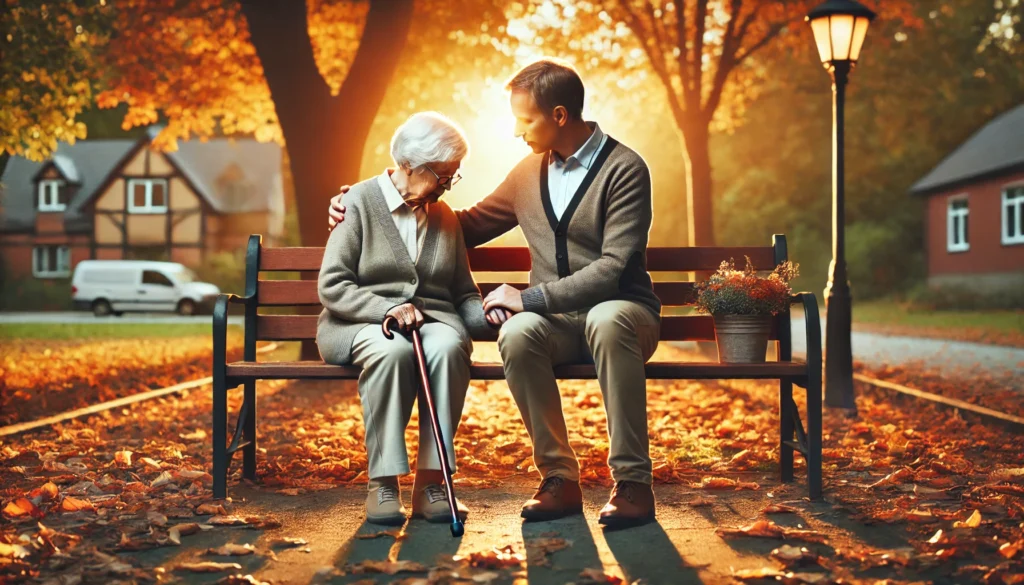
Conclusion
The relationship between dementia and balance problems is a complex but deeply important area of research and care. Far from being separate issues, cognitive decline and motor instability are interconnected consequences of neurodegenerative change. Recognizing this connection early can transform outcomes—reducing fall risk, preserving independence, and improving overall well-being.
By understanding how balance issues can serve as a warning sign for dementia, families, clinicians, and caregivers can act swiftly. Through early assessment, targeted physical therapy, thoughtful medication management, and home safety modifications, it is possible to support individuals with dignity and protect their physical health.
Ultimately, addressing dementia and balance together reflects a more holistic approach to aging and cognitive care—one that honors the full spectrum of human function, from memory to mobility, and everything in between.
Was this article helpful? Don’t let it stop with you. Share it right now with someone who needs to see it—whether it’s a friend, a colleague, or your whole network. And if staying ahead on this topic matters to you, subscribe to this publication for the most up-to-date information. You’ll get the latest insights delivered straight to you—no searching, no missing out.
Further Reading:
Cognitive Brain Damage Symptoms: What They Mean and When to Seek Help
Early Alzheimer Vision Problems: How Eye Changes May Signal Cognitive Decline


